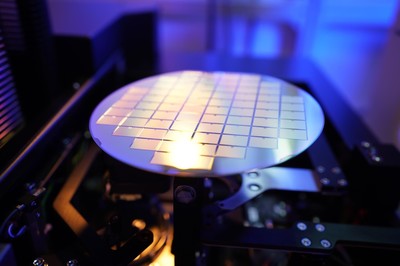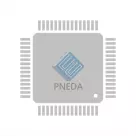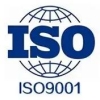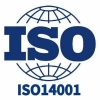From thyristors to gallium nitride: the technological evolution of power semiconductors

In the continuous progress of modern electronic devices, power semiconductors play a crucial role. Its main function is to provide efficient performance in power conversion and control. Along this trajectory, from the early days of thyristors to the current focus on gallium nitride (GaN) technology, the evolution of power semiconductors has not only affected the efficiency of electronic devices, but also improved their performance and stability. This paper will introduce the development of power semiconductors, and focus on the characteristics and applications of each technology.
The rise of thyristors (SCR)
The Silicon Controlled Rectifier (SCR) is an important power semiconductor device developed in the early 1950s. Its structure consists of four layers of semiconductor material, enabling efficient power control. The biggest feature of thyristor is that it has good current carrying capacity and high voltage resistance, which makes it widely used in DC circuit and AC motor control.
SCR works by applying a control signal to turn the device on, and once on, it will remain in this state until the current is reduced to a minimum. Thanks to this feature, SCR is ideal for power regulation and rectification, such as motor speed control, lighting dimming, and power conversion. However, the disadvantage of SCR is that the turn-off process after it is on is more complex, requiring additional circuits to achieve the switch, and this has been improved by subsequent technological developments.
The popularity of insulated gate bipolar transistors (IGBTs)
Entering the 1980s, the advent of the Insulated Gate Bipolar Transistor (IGBT) changed the landscape of power semiconductors. Igbts combine the high input impedance of MOSFETs with the high current carrying capacity of BJTS, making them ideal for efficient power conversion. IGBT has the advantages of fast switching speed and low on-off loss, so it is widely used in scenarios such as HY57V164120GH inverters, power transmission and inverters.
The structural design of IGBTs allows them to operate stabilities in high-voltage, high-current environments, and although their turn-off speed is slightly slower than that of MOSFETs, their voltage resistance and thermal stability make them a common choice in heavy industry and power systems. In addition, IGBTs also have better resistance to electrical interference and can operate reliably in harsh environments.
Rapid development of power MOSFETs
In Power semiconductors, power metal-oxide semiconductor field-effect transistors (power MOSFETs) are another important technology. Since the 1970s, MOSFETs have gradually replaced traditional BJT and SCR, occupying an important position in power management, switching power supply and other fields. MOSFET has the characteristics of fast switching speed, simple control, small size, etc., which is very suitable for high-frequency applications.
Especially with the continuous progress of the manufacturing process, the voltage resistance of power MOSFETs is gradually improved, and the working voltage of many high-voltage MOSFETs today has exceeded 600V, and even more than 1500V, which is widely used in electric vehicles, power electronic converters and other high-frequency applications. More importantly, the controllability of power MOSFETs makes them perform well in a wide band (application frequency range), and can support efficient energy conversion.
Silicon carbide (SiC) revolution
In the power semiconductor technology of the 21st century, Silicon Carbide (SiC) began to gain widespread attention. Compared with traditional silicon-based materials, silicon carbide has higher thermal conductivity, greater breakdown voltage and higher temperature tolerance. This enables SiC devices to maintain good performance in high power density and high temperature environments.
Silicon carbide technology is increasingly used in electric vehicles, photovoltaic systems and power conversion equipment, and its biggest advantage is that it can achieve smaller sizes and higher energy efficiency. In addition, the performance of SiC under high-frequency switching far exceeds that of traditional silicon devices, which greatly promotes the development of high-speed power electronic devices.
Future of gallium nitride (GaN)
With the increasing demand for more efficient and miniaturized electronic devices, Gallium Nitride (GaN) is taking an important place in technological innovation as the next generation of power semiconductor materials. The band gap of gallium nitride material is larger than that of silicon and silicon carbide, which enables it to achieve higher switching frequency and lower on-off loss under high pressure and high temperature environment.
The rapid development of GaN technology has shown great potential in a variety of high-frequency applications, especially in 5G communications, satellites, and high-performance power conversion. Gallium nitride devices can also help reduce the size of the system and reduce the heat dissipation requirement, thus providing a new solution for miniaturized, high-density electrical energy applications. Another important characteristic of gallium nitride is its low power loss, which helps achieve higher overall system efficiency, which is particularly important in today's increasingly scarce energy society.
Diversified application scenarios
With the continuous evolution of power semiconductor technology, from the early thyristors to today's gallium nitride, the emergence of each generation of new materials has promoted the efficiency and performance of electronic products. These power semiconductor devices are not only widely used in various fields such as household appliances, industrial equipment and transportation, but also provide strong support for the collection and conversion of renewable energy.
For example, in the photovoltaic system, the efficient use of solar energy is realized through efficient power conversion devices; In electric vehicles, the use of GaN and SiC devices can significantly improve energy conversion efficiency and improve driving range. In addition, the combination of IGBT and MOSFET shows broad application prospects in electric drive technology.
As the global focus on green and low-carbon technologies gradually increases, the future of power semiconductors remains bright, and even more advanced and efficient materials and devices may emerge.
The Products You May Be Interested In
 |
AOZ8015DI | FILTER RC(PI) 100 OHM/20PF SMD | 5256 More on Order |
 |
AOZ1033AI_2#A | IC REG BUCK ADJUSTABLE 3A 8SOIC | 6102 More on Order |
 |
AOZ1254PI | IC REG BUCK ADJUSTABLE 4A 8SO | 7758 More on Order |
 |
AOZ1252PI | IC REG BUCK ADJUSTABLE 2A 8SO | 5040 More on Order |
 |
AOZ1320CI-05 | IC POWER DIST LOAD SW SOT23-6 | 3546 More on Order |
 |
AON3806 | MOSFET 2N-CH 20V 6A 8-DFN | 53909 More on Order |
 |
AO6800 | MOSFET 2N-CH 30V 3.4A 6-TSOP | 2916 More on Order |
 |
AON6994 | MOSFET 2N-CH 30V 19A/26A | 49716 More on Order |
 |
AOK30B120D2 | IGBT 1200V 30A TO-247 | 8172 More on Order |
 |
AON7752_101 | MOSFET | 4554 More on Order |
 |
AO4447AL_201 | MOSFET P-CH 30V 8SOIC | 6840 More on Order |
 |
AON2707_001 | MOSFET P-CH W/DIO 6DFN | 6858 More on Order |
 |
AON6748_101 | MOSFET N-CH DFN | 8712 More on Order |
 |
AOTF10T60L | MOSFET N-CH 600V 10A TO220F | 6696 More on Order |
 |
AOW418 | MOSFET N-CH 100V 9.5A TO262 | 4158 More on Order |
 |
AOTF472 | MOSFET N-CH 75V 53A TO220FL | 8172 More on Order |
 |
AOI1N60L | MOSFET N-CH 600V 1.3A TO251A | 8874 More on Order |
 |
AOT8N60 | MOSFET N-CH 600V 8A TO-220 | 3258 More on Order |
 |
AON7510 | MOSFET N-CH 30V 75A DFN | 5796 More on Order |
 |
AON6578 | MOSFET N-CH | 6822 More on Order |
 |
AOTF12N60L | MOSFET N-CH 600V 12A TO220F | 16140 More on Order |
 |
AOD3N80 | MOSFET N-CH 800V 2.8A TO252 | 21306 More on Order |
 |
AOTF240L | MOSFET N-CH 40V 20A TO220F | 27462 More on Order |
 |
AO3414 | MOSFET N-CH 20V 4.2A SOT23 | 2672202 More on Order |









